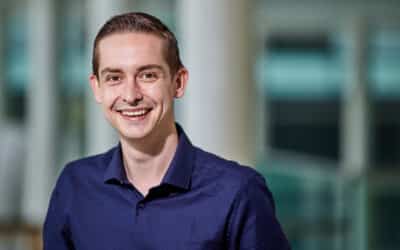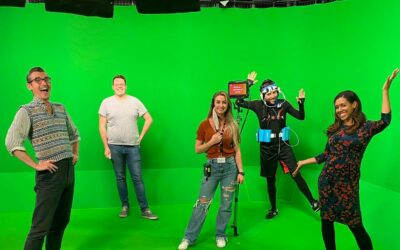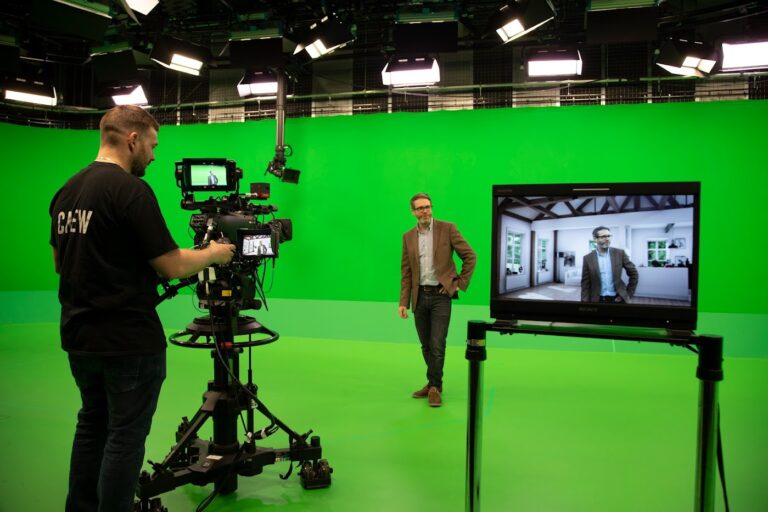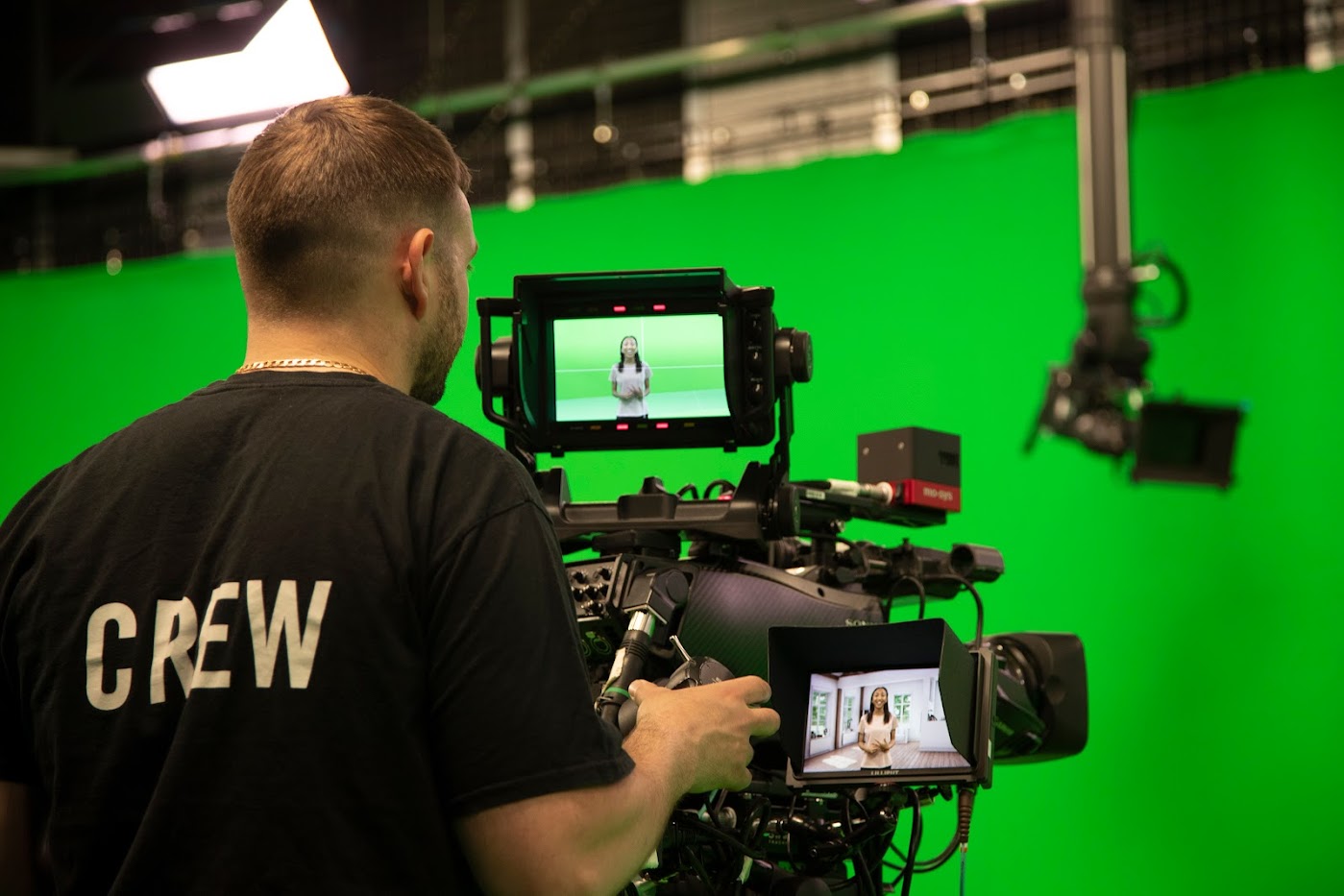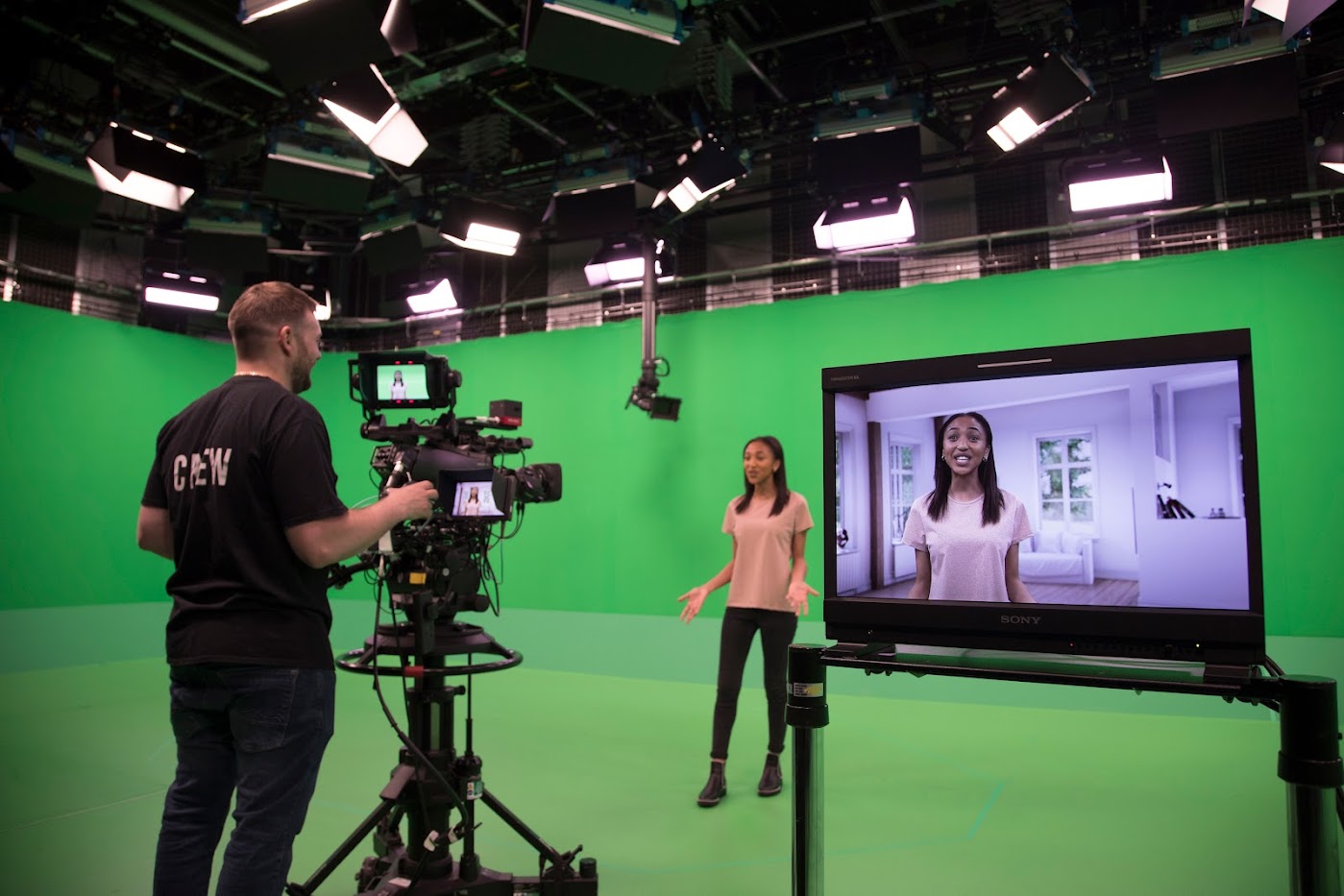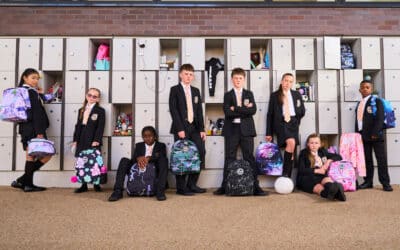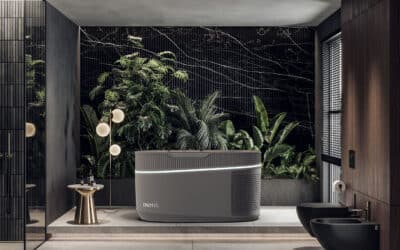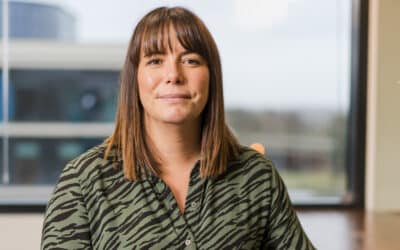You’re watching BBC’s Match of the Day and the studio camera shot at the end of the highlights VT shows a dark sky full of stars, it tilts down to reveal a stylised, branded light-fitting; the camera then twists and pans 180 degrees across the studio towards an oversized image of a key football player and their game stats. You might think ‘wow’, how do they do that? writes Richard Wormwell, Head of Production Innovation at dock10.
The answer lies in Virtual Studio Technology. As Head of Production Innovation at dock10, I’ve been involved in taking this innovative technology from concept through development to on-air with shows including The BBC Euros 2020, The FIA Gran Turismo World Championships and a favourite of children (and parents!) – BBC Bitesize Daily.
Instead of steel, wood and plastic, a virtual studio set is built out of pixels in a real-time 3D rendering engine; it seamlessly combines real people and objects with computer-generated environments and objects to achieve otherwise impossible sets that are so convincing you cannot tell what is real and what is not. The combination of leading-edge technologies that dock10 uses to achieve these super-realistic virtual environments still amazes me – here’s how we do it.
3D space
Essentially our virtual studios use a traditional green screen set-up but with one important difference: we track the camera positions. When a camera is operated (whether hand-held, on a pedestal, a jib, a rail cam or even a techno-crane) we know with sub-millimetre accuracy where it is within the three-dimensional space of our studio; and at 25 frames per second, we accurately read all six degrees of movement (pan, tilt, roll, forward and back, left and right, up and down) as well as lens focal length and focus depths. We capture all this information through a small but wide-angled motion camera and LED sensor mounted on top of our broadcast cameras.
These motion cameras point to the ceiling and send a constant infrared (IR) signal up to the studio grid where a series of randomly placed reflective stickers bounce the IR light back down to the motion camera. The camera’s sensor reads the light hitting it and the time it’s taken to travel, then by a process of triangulation we can correctly calculate the exact position of the camera in 3D space.

